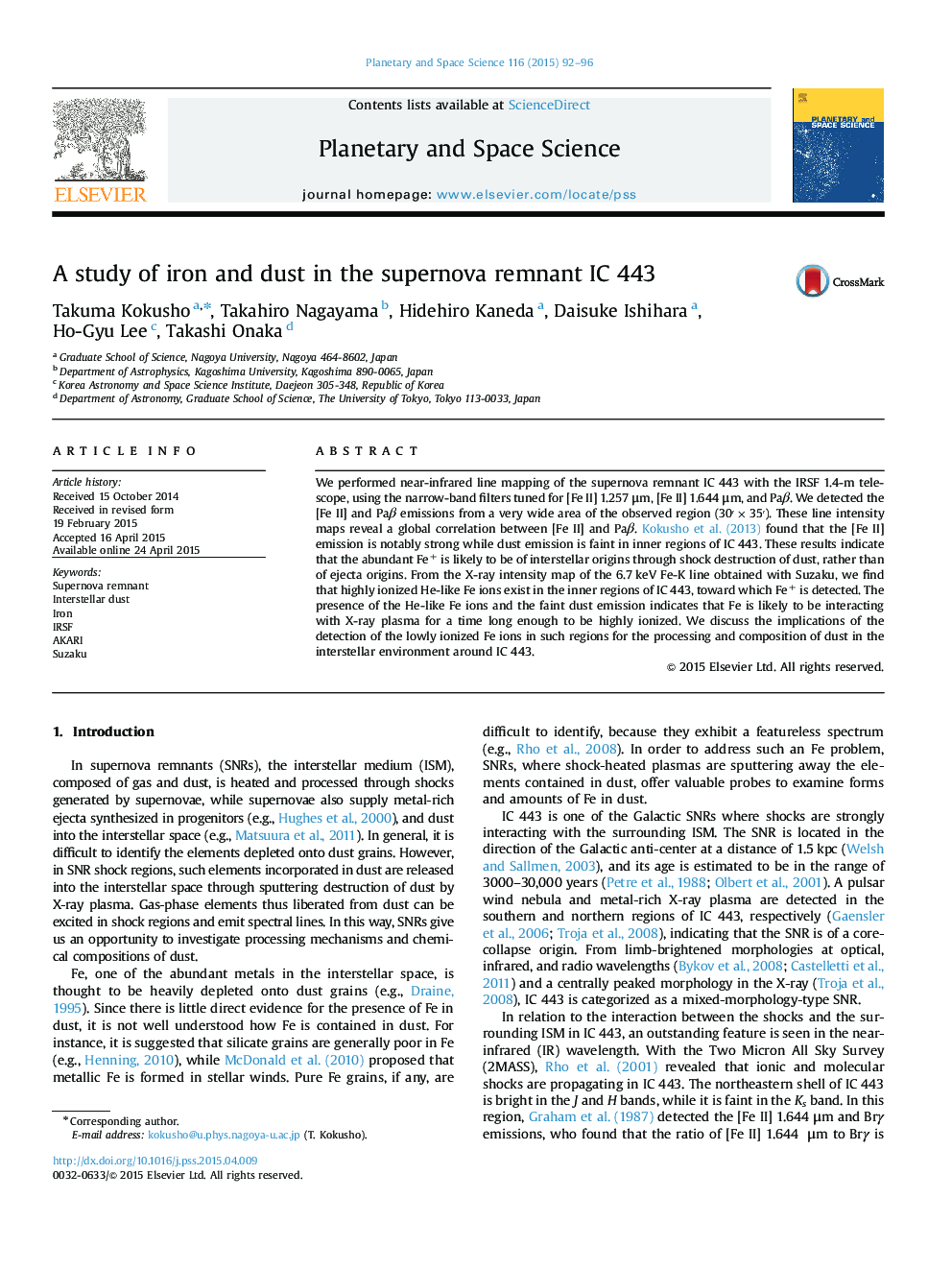| Article ID | Journal | Published Year | Pages | File Type |
|---|---|---|---|---|
| 1780959 | Planetary and Space Science | 2015 | 5 Pages |
Abstract
We performed near-infrared line mapping of the supernova remnant IC 443 with the IRSF 1.4-m telescope, using the narrow-band filters tuned for [Fe II] 1.257 μm, [Fe II] 1.644 μm, and Paβ. We detected the [Fe II] and Paβ emissions from a very wide area of the observed region (30â²Ã35â²). These line intensity maps reveal a global correlation between [Fe II] and Paβ. Kokusho et al. (2013) found that the [Fe II] emission is notably strong while dust emission is faint in inner regions of IC 443. These results indicate that the abundant Fe+ is likely to be of interstellar origins through shock destruction of dust, rather than of ejecta origins. From the X-ray intensity map of the 6.7 keV Fe-K line obtained with Suzaku, we find that highly ionized He-like Fe ions exist in the inner regions of IC 443, toward which Fe+ is detected. The presence of the He-like Fe ions and the faint dust emission indicates that Fe is likely to be interacting with X-ray plasma for a time long enough to be highly ionized. We discuss the implications of the detection of the lowly ionized Fe ions in such regions for the processing and composition of dust in the interstellar environment around IC 443.
Related Topics
Physical Sciences and Engineering
Earth and Planetary Sciences
Geophysics
Authors
Takuma Kokusho, Takahiro Nagayama, Hidehiro Kaneda, Daisuke Ishihara, Ho-Gyu Lee, Takashi Onaka,
